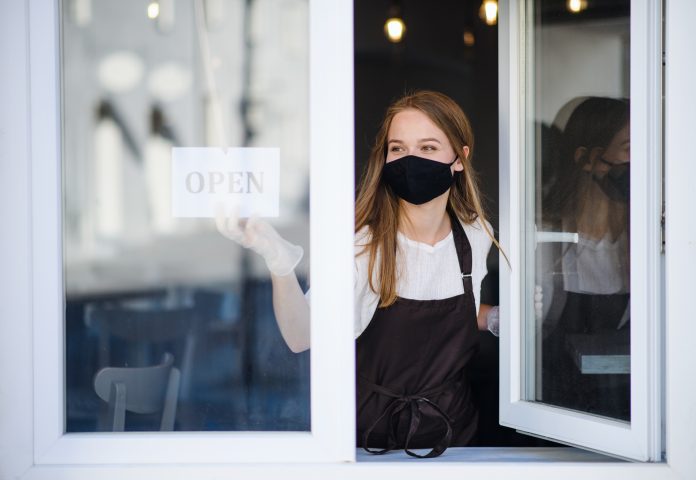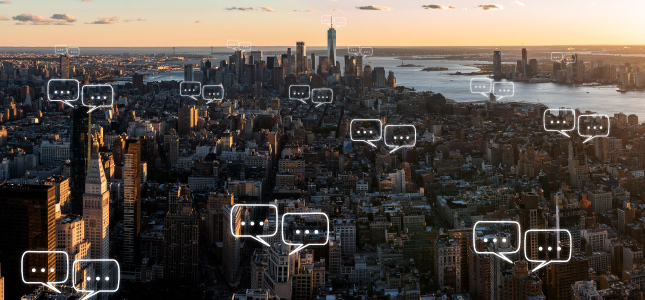Grocery stores and supermarkets sit on the front lines of customer experience. They are literally a lifeline to communities, and when the pandemic hit, they needed to act fast to keep up with minute-by-minute changes.
Cincinnati-based Kroger, the largest traditional grocer in the United States, operates more than 2,700 grocery stores around the country with brands including Ralphs, Dillons and King Soopers. The company was already beginning a shift to digital self-service and more distributed customer support when COVID-19 began to spread. Like most other companies, the pandemic forced its hand to act fast.
Jamie Lancaster, vice president in Kroger’s Contact Center of Excellence, oversees Kroger’s customer contact center, support center and contact center shared services. He recently discussed how the organization doubled contact center operations and increased digital support by 92% in just a few weeks to manage customer interactions during the crisis. Here are some highlights.
Customer Strategist: How has the pandemic affected your business?
Jamie Lancaster: You are seeing the landscape shift, but you are also seeing the brick and mortar world that we operate in really fighting back. There is a lot more emotional attachment customers have to [grocery] purchases. If you are buying a book or a CD, it does not matter where it came from. The actual trust you have given is the author or to the movie studio that made it. But when people are providing food and things they need day-in and day-out for their families, there is a lot more of an emotional attachment. Kroger is still in your neighborhood. We’re still your local grocery, we’re America’s grocer, but we want to be digitally enabled. There is a deep emotional connection to maintain. Every one of us remembers going to the grocery with our mother and watching her get her checkbook out, that kind of tactile response. We want to maintain that, but we also want to be really convenient. And obviously the pandemic has forced the issue. A lot of those things became very big because people didn’t want to physically go into the store. Delivery became big because people didn’t even want to leave the house. Those things have grown significantly.
There is a deep emotional connection to maintain. Every one of us remembers going to the grocery with our mother and watching her get her checkbook out, that kind of tactile response. We want to maintain that, but we also want to be really convenient. And obviously the pandemic has forced the issue. A lot of those things became very big because people didn’t want to physically go into the store. Delivery became big because people didn’t even want to leave the house. Those things have grown significantly.
What that means to the contact center is that our number of contacts has gone up because the number of people walking into the store has decreased as a percentage of the total customers. Now they need to use other modalities to talk to us —chat, email, voice, social, etc.
And while we’ve seen business grow by X, we’ve seen remote contacts grow way more than X. Grocery has always been a face-to-face business. Now that everyone has gone remote, shoppers are contacting us with the same questions, but in new ways. We’re seeing customers change very rapidly and those things are all trends that we in the contact center are responding to.
CS: When you talk about different modalities, what kind of channels do you have available for your customers?
JL: We still get a lot of voice. People have a relationship with their grocery where they feel more comfortable talking to someone. For brands like Amazon, their first idea is to go online to contact them. There is no picture in someone’s mind of an Amazon manager. That’s not the case with Kroger. It’s funny, I used the checkbook example before, but I know there are customers that write checks at one place and that’s the grocery. Certain parts of the grocery experience have been kind of frozen in time for them.
But I think it’s almost a tactile thing. It’s like going into an old bookstore and you smell it. You come into grocery, you smell the produce and it makes you think mom, dad, checkbook, it brings a tactile response.
So, while customers are willing to engage us in multiple ways, they still like to call us. And we’re very reluctant to do anything to damage that relationship. We will automate as much as we can, but we want you to actually talk to a human as much as possible if you want to. So we want to say, “It may be better to go talk to this automated assistant, but you’re always welcome to talk to a person,” because that’s much more tied to our brand identity than some other businesses.
CS: Do you have any specific initiatives that you’re proud of since everything went haywire?
JL: We effectively had to double the size of our customer support center from April to May. We had about a month because we figured out that things weren’t going back to normal and we saw what the customers were doing and the number of contacts they needed. Right around April 1st, we said we have to double our size by May 1st. And we did that. We restored our service to acceptable levels by May 1st. And it was four tough weeks, but we got there.
CS: What were some causes of volume surge?
JL: There were a number of issues. Our digital growth in the first quarter grew by 92% and every time there was issue, customers ended up contacting us. There are self-service options, but there are just a lot of calls that relate to them. We got calls about what’s in stock, or complaints about out-of-stock orders. Or something like “I came and got my pickup order and only half the items are there.”
Also, we use Instacart as a partner. They were getting hit at levels they’d never seen, so they were struggling. They were getting two, three, four, five times the number of orders they used to get. Their shoppers were going into stores and the stores were out of stock, so we would field calls from their shoppers as well as our own.
People called to complain, but there was nothing we could do. The supply chain was really struggling at that time. There just wasn’t any toilet paper in the world to be had back in March. Things like that.
We received more contacts into our contact center—they more than doubled [from April to May]. And so we just didn’t have the bodies to handle it. We had a few automation options [EG1] we turned up, but it wasn’t enough. In order to maintain service, we were actually able to double our size by May 1st because we had three or four different options that we could turn to quickly. If we had done it all by ourselves, we wouldn’t even have had the building space. But by having a good partner network, we were able to have each of them take a little bit of that burden and that made it bearable. Diversification was the key.
CS: How do you maintain your great emotional connection with customers while also increasing your digital footprint?
JL: The first thing is people. As people are getting more digitally engaged with us, we are not forcing them to use self-service. We’ve made the conscious decision to have a person on the other end of the line. That way, if customers have issues, we don’t want to send them through a really hard process to get to our people. We focus on people helping them. Now, once they get comfortable with digital self service, then they’re probably more happy to use an automated system. So if you want order status, you can obviously go check online. You can log in. You can use the voice response system and have it tell you. It’s very convenient.
But particularly when you’re having an emotional response, like during the pandemic, sometimes you just want to talk to a person. We feel like we, as America’s grocer, have a kind of a higher calling to be there for customers in multiple ways. So, I think the biggest part of it is that we’re using digital as an extension of the relationship we already have with you. Our core business is still being in your neighborhood, being there when you need us, with a personal connection.
CS: How do you plan to continue to evolve both the contact center operations as well as the overall customer experience?
JL: I see it as a continuum. There are things that are differentiators to the customer that won’t be differentiators in the future. For example, our loyalty program that gives people fuel points was this huge thing. And now customers expect it. When they call in and they need to know how many points they have, they can use the automated attendant. But 10 years ago, customers wanted to talk to an agent because they wanted to convey how awesome it was. You have to continually reevaluate. Whatever your brand is, you have to constantly be looking at what is commoditized and what’s a differentiator.
Differentiators for us now are freshness and being fresh in every way with the customer. But they also want us to get the basics right, like having the products they need. So the bottom line is we want customers to be satisfied. We’re very big proponents of the effortless experience model, which means we really want to lower customers’ effort when they interact with us.
If you’re calling that your coupon that didn’t work, we just want to fix it for you as quickly as we can. So that’s one where we say, get it done, get it taken care of. But we also want to augment areas that reinforce our brand promise of freshness and friendly. So when you’re doing your Thanksgiving dinner prep, we feature new products, cooking guides, and other ways to be a differentiator with the customer.
CS: What advice do you have for other CX leaders managing traditional companies that want to go more digital?
JL: I think you have to make it your own. You can’t look at what anyone else is doing and say it’s going to fit for you. You have look at the social contract you have with your customers. Where I see people make the mistake is when they suddenly add digital tools because they’ve seen other companies do it or because it’s a trendy thing to do, not because it fits what customers want from your brand.
We don’t want to change [our service] significantly. We want to go [more digital] when customers let us, but not force them.











